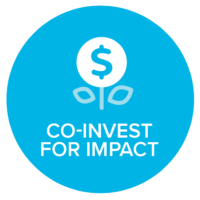 The National Fund for Workforce Solutions was established on a co-investment model that leverages private and public and local and national funding so that our network of communities has greater resources to pursue our integrated solutions.
The National Fund for Workforce Solutions was established on a co-investment model that leverages private and public and local and national funding so that our network of communities has greater resources to pursue our integrated solutions.
So, what does co-investment mean? To answer this, we asked five of our collaboratives from across the country what co-investment looks like in their communities. We selected these five because they are each housed within a different type of organization: community foundation, workforce investment board, United Way, Chamber of Commerce, and economic development organization. And while each collaborative has its distinct structure, challenges, sector focus, and funders, there are more commonalities than differences when it comes to co-investment.
Diversify
Every collaborative emphasized the importance of having a diversified funding stream. Relying on a single funding source limits your ability to get to scale, whereas multiple funders of various types enables you to pursue a broader array of goals and objectives. Furthermore, when funders pool their investments, they both mitigate risk and generate greater impact. Another thing collaboratives seemed to agree on was the challenge of receiving public dollars. Collaboratives housed at local workforce boards distribute WIOA and other public dollars in that capacity but do not pursue government dollars to fund their operations. Our collaboratives agree that the requirements and limitations for public dollars outweigh the benefits. However, collaboratives will sometimes align private funding with projects that are funded with public dollars to help scale those initiatives.
Relationships, Relationships, Relationships
Building relationships is at the heart of co-investment. To bring more and varied funders to the table means cultivating those relationships over time. Once they’re at the table, you must communicate with them regularly and demonstrate success in order to keep them there. But funders aren’t the only co-investors. Under the National Fund’s demand-driven approach, employers must also play a role. Their work to make jobs better, improve practices, change systems, and provide better opportunity for workers is in large part what funders are supporting. Strong, collaborative relationships with committed employer partners supports successful co-investment.
Get Everyone On the Same Page
Effective co-investment comes when the goals and objectives of all partners are understood and aligned. Collaboratives need to understand their strengths and play to them with a clear organizational mission. When co-investment works well, collaboratives cultivate relationships with funders whose missions align with theirs and work with them on projects that employer partners are interested in. When all the stakeholders can come to a clear understanding of objectives and goals, co-investment can generate significant impact.





